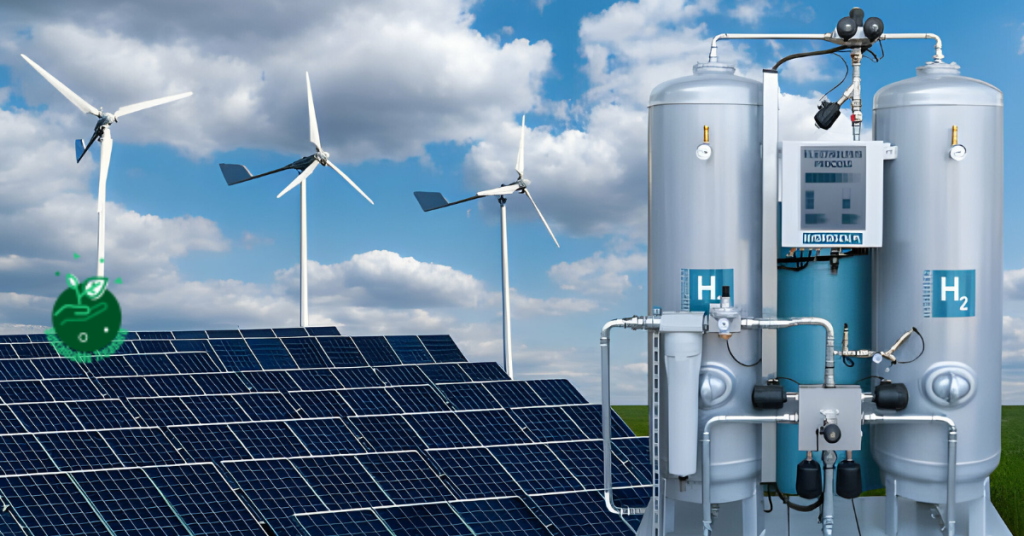Table of Contents
Are you wandering what Carbon Credit Investment Benefits And Risks are? Yes, Carbon credits have become a hot topic in investing circles lately.
As companies and governments pledge to reduce greenhouse gas emissions, demand for carbon offsets is growing. At the same time, new carbon markets are emerging around the world. This creates interesting opportunities – but also risks – for investors.
In this post, we’ll break down what you need to know about risks and potential upside of investing in the carbon market. There’s a lot to unpack, but let’s start with the basics.
What Are Carbon Credits Anyway?

A carbon credit represents one tonne of carbon dioxide equivalent gases removed from the atmosphere. They are created when an project reduces emissions compared to a hypothetical baseline. For example:
- A forest conservation project that prevents deforestation
- Building a wind farm instead of a fossil fuel plant
- Implementing greenhouse gas destruction technology
The verified emissions reductions can then be sold as credits to companies who need to offset their own emissions. As demand grows for offsets, investing in the projects generating credits can provide returns.
But it’s not as simple as it sounds. Fluctuating market dynamics, regulation changes, and challenges verifying impacts make carbon a complex asset.
Now let’s dive deeper into the specific risks and rewards these credits can offer.
Carbon Credit Investment Benefits and Risks
Carbon credits offer investors exposure to several key financial factors:
Potential for returns and growth. As more companies announce net zero emissions targets, demand for offsets is projected to grow 15-30 times by 2050. And in compliance markets like the EU Emissions Trading System, prices per tonne have risen over 200% since 2018. This upside makes carbon a potentially lucrative investment. However, there are risks impacting real returns.
Market volatility and uncertainty. Carbon markets are still developing globally. Different regions have credits of varying quality and price. And in purely voluntary markets, reliance on corporate buyers makes prices vulnerable to economic downturns.
During COVID-19 for example, credit prices dropped nearly 15% as companies cut sustainability budgets. While long-term growth is likely, investors must prepare for price fluctuations.
| Carbon Credit Price Changes | 2020 | 2021 | 2022 |
| Voluntary Market Average | -14% | +43% | +5% |
| California Carbon Allowance | -30% | +230% | -60% |
| EU Emissions Allowance | -10% | +160% | -45% |
Evolving regulation. Many observers expect an increase in government carbon policies like net zero targets and carbon pricing schemes. But the regulatory environment is still unpredictable.
Changes in rules around international trading or project eligibility could impact credit demand. And regulation differences between regions complicate cross-border transactions. While welcomed, more governance introduces uncertainty for investors and creditors alike.
So in summary – carbon offers upside but markets remain volatile. Risk mitigation measures like portfolio diversification are key.
Environmental Impact Considerations
Beyond financial factors, understanding carbon credits’ environmental integrity is crucial for investors with sustainability mandates. However, uncertainties exist around:
Quantifying and verifying emissions reductions. A carbon credit is only as good as the emissions reduction behind it. Yet calculations depend on assumptions like baseline emissions and leakage risks.
And verification challenges exist, especially for nature-based solutions like forestry. New technologies like satellite monitoring, blockchain ledgers, and AI analytics hope to strengthen confidence. But gaps persist which complicates trading.
Ensuring permanence of reductions. When carbon is stored naturally in trees or soil, the storage may not be permanent. Forests can be logged in the future canceling credits sold earlier.
Or climate change itself threatens ecosystems’ ability to maintain reductions. While buffers help address reversals, uncertainties continue around long-term storage.
Underlying project issues. Not all emissions reduction projects are created equal. Low quality projects with minimal climate impact still generate credits sold in loosely regulated markets.
And some projects have raised social concerns around land rights or environmental harms. While standards aim to address these gaps, risks remain of “greenwashing” in carbon markets.
So while the concept of funding decarbonization sounds noble, claims around impact require scrutiny. Responsible investors must parse through hyperbole and information gaps challenging climate markets today.
Societal Factors to Weigh
In addition to financial and environmental considerations, social risks and benefits arise with carbon market investments including:
Funding sustainability initiatives – Voluntary carbon markets aim to accelerate emissions reduction activities by directing corporate finance to climate solutions. Investing in these markets helps play a role in enabling the global transition to net zero.
But potential land rights issues – Projects like forest conservation and reforestation require significant land. And indigenous communities may lack formal titles to the land inhabited for generations. Carbon projects threatening traditional land rights raise ethical concerns.
Standards help but gaps persist – Leading bodies like Verra, Gold Standard and Plan Vivo have created project design and monitoring requirements improving confidence and social safeguards. But not all credits sold meet the same level of rigor. And standards continue to evolve to address complex challenges around community rights and more.
Like most investments, carbon markets involve trade-offs around risk factors both financial and ethical. Awareness of the issues helps guide responsible investment choices.
Mitigating Investment Risks
Given the market uncertainty today, what can carbon investors do to manage risks in this emerging asset class?
Diversify across project types, regions and vintages. Like stocks and other alternatives, diversification helps smooth out carbon exposure. Blend nature-based and tech-based credits, various geographies, as well as project stages from development to issued credits.
Prioritize high quality standards compliance. Credits certified by endorsed programs like Verra’s VCS undergo third-party validation and monitoring – providing more confidence in their environmental claims. Focus portfolios on these standards-approved credits.
Employ robust due diligence around underlying projects. Do research beyond certificates to understand projects’ community and biodiversity impacts. Tools like Sylvera’s ratings provide independent assessments on credit quality. Though time consuming, the analysis helps direct investment to more credible assets.
Consider investment roles beyond buying offsets. Rather than just purchasing credits, investors can fund projects directly through loans, bonds or equity. This provides more control and potential returns, albeit at higher risk levels. Blended finance approaches help catalyze capital with public funding to derisk opportunities for private investment.
As with any emerging opportunity, risks exist alongside the upside. But tools are emerging to help climate conscious investors allocate effectively.
The Future of Carbon Credit Investing
Carbon markets entered a new phase in 2022. New standards, government policies, and corporate commitments set the stage for rapid growth. Yet, open questions remain around market infrastructure and integrity assurance hindering mainstream adoption.
Market growth expected but integrity concerns persist. Voluntary emissions reduction credit demand could grow +15-30 times by 2050 according to one McKinsey estimate. And compliance markets are expanding in size and scope as well. However issues verifying reductions through opaque supply chains continues. Users struggle gauging credit quality relevant to their claims. Which could stall market development.
Regulations improving but complications arise. Government carbon policies aim to spur decarbonization through carbon pricing and enforceability. But complexity emerges across jurisdiction nuances. And regulation risks disadvantaging smaller projects with high monitoring burdens. While welcome, policy changes need balanced against market usability and inclusiveness concerns.
Opportunities to mainstream climate finance. Interest continues growing for sustainable assets like carbon credits among institutional investors. And innovators build tokenized credit products opening access through crypto exchanges. Yet skepticism persists around environmental credentials verifications necessary to assure mainstream adoption at scale.
Carbon markets entered an important transition period requiring collective action across private sector, government and civil society to fulfill their potential balancing remaining risks.
FAQs

What Are The Risks Of Water Energy?
Hydropower projects carry risks around financial factors, environmental impacts, and social concerns that investors should understand.
On the financial side, large dams require major upfront investments over $1 billion in many cases. Complex engineering and susceptible to natural disasters make budgets hard to predict. And droughts or climate impacts can reduce expected electricity outputs.
Environmental issues can also arise like habitat disruption from dams and tunnels changing river flow. Fish migration routes being blocked require mitigation programs. And reservoirs increase water evaporation and methane emissions in some instances.
Then there are societal risks around displacing communities or negatively affecting downstream water access. Cultural heritage destruction near reservoirs has occurred. Proper community engagement and resettlement support is essential.
Overall hydropower impacts vary widely based on project scale, location, and design. But evaluating risks holistically across financial, environmental and social realms is crucial for developers and investors.
Can You Invest In Hydropower?
Yes, investors can fund hydropower projects in several ways:
- Green Bonds – Issued by governments or companies to fund renewables projects through fixed income vehicles
- Infrastructure Funds – Private equity pools focused specifically on clean energy infrastructure like hydro plants
- Public Stocks – Listed companies involved owning or operating dams and electricity generation
- Direct Project Investment – Providing development capital in return for equity stake or revenue share
Each option differs in liquidity, risk levels, and returns. But all provide exposure to the growing hydro sector with investment performance tied to electricity rates and plant utilization. Careful due diligence understanding project details is key.
What Are 3 Benefits And 3 Disadvantages Of Hydropower?
Benefits
- Renewable – Hydro harnesses water power avoiding fossil fuel consumption
- Reliable Energy – Rainfall fluctuation impacts output less vs wind/solar seasonality
- Storage Capability – Dams act as “water batteries” dispatching power on demand
Disadvantages
- High Upfront Capital Costs – Massive infrastructure investments over $1 billion frequently
- Site Specific Impacts – Disrupting local ecosystems, habitats and communities
- Drought Risk – Precipitation changes and climate effects can reduce output
So in summary – hydro offers renewable, flexible energy but with financial risks and localized environmental issues to consider.
What Are 2 Disadvantages Of Hydropower?
Two of the main disadvantages of hydropower to consider are:
Habitat & Ecosystem Disruption – Dam reservoirs flood areas changing river flows/habitats. Fish migration can be blocked requiring mitigation.
Community Impacts – Direct displacement and downstream effects like reduced water access or flooding. Cultural heritage near reservoirs also threatened.
Proper siting, operating rules and community support programs can help address these negatives. But project developers must evaluate thoroughly and avoid simply prioritizing potential electricity generation over environmental and social costs. Getting the balance right is key.
What Is The Biggest Problem With Hydro?
The biggest problem with hydropower arguably relates to environmental and community impacts surrounding projects. Specifically:
- Blocking fish migration routes and altering river ecosystems
- Flooding natural habitats and landscapes
- Displacing indigenous communities directly or affecting water access downstream
Though practices continue improving, hydropower history includes insufficient evaluation and mitigation of habitats disruption and societal costs.
Going forward, ensuring projects enhance both environmental and community wellbeing equally alongside energy gains will determine whether hydro fulfills its immense promise. Integrated planning and cooperation with all stakeholders is crucial to realizing that potential.
Which Of The Following Are Factors In Generating Hydropower?

Key factors determining hydropower electricity generation include:
- Water Flow Rate – Speed and volume of water moving through the turbines
- Head Height – Vertical distance water falls from reservoir reaching turbines
- Storage Capacity – How much water dams can hold dispatching flows when needed
- Turbine Efficiency – Technical specs like size, number and condition impacting energy conversion
Understanding these variables at specific plant sites allows modeling expected average and peak outputs. Other external factors like rainfall patterns also influence generation over time. Evaluating all parameters provides basis for determining project feasibility and estimates.
How Much Does Hydropower Cost?
Hydropower costs vary widely depending on scale and site specifics but large projects investment frequently exceeds $2,000 per kilowatt capacity installed. With large dams over 1 gigawatt reaching $5 billion total sometimes.
High upfront infrastructure and construction costs make financing complex. But fuel is free from river flows once built.
Operational plants costs sit around $20-40 per megawatt-hour – on par with wind or solar. revenue over decades of operation aims to offset the major initial capital expenditures for these massively expensive installations.
Getting the public-private partnership financing models right remains an ongoing challenge in the sector to enable further sustainable growth.
What Are The Advantages And Disadvantages Of Hydropower?
Advantages
- Renewable low emission energy
- Reliable baseload or flexible dispatchable power
- Energy storage capability in reservoirs
- Dams provide flood control and water access benefits
Disadvantages
- Massive upfront infrastructure investments
- Disrupting natural habitats and fish ecosystems
- Community impacts from displacement or downstream effects
- Drought vulnerability affects electricity outputs
So in essence, hydropower offers unique advantages as renewable energy. But realizing that potential requires thorough impact evaluation and community engagement to minimize downsides that have plagued past projects. Only then can hydro sustainably play the role hoped in clean energy transitions.
Conclusion: A Risky But Critical Climate Solution
In conclusion, carbon credit investing offers unique opportunities to fund emissions reductions while seeking returns. But with opportunities come risks – from volatile market dynamics to environmental integrity concerns.
Yet, climate change itself poses the greatest risk to society and markets. Carbon credits provide a mechanism, albeit imperfect, for corporations to act today financing projects tackling the crisis.
For investors then, managing the risks around these climate assets is central to channel financing into credible solutions while benefiting financially. It’s a virtuous cycle if supported properly through transparency, governance and accountability measures still developing across carbon markets.
While not for the faint hearted, carbon credit investment has a role mobilizing private finance at scale into global net zero efforts. Mindful of the challenges, responsible investors can lead markets evolving to maturity fulfilling their purpose and upside for participants.



